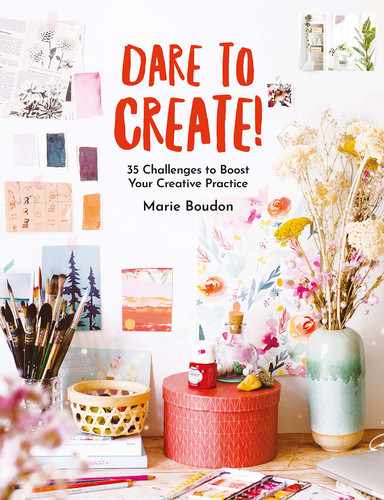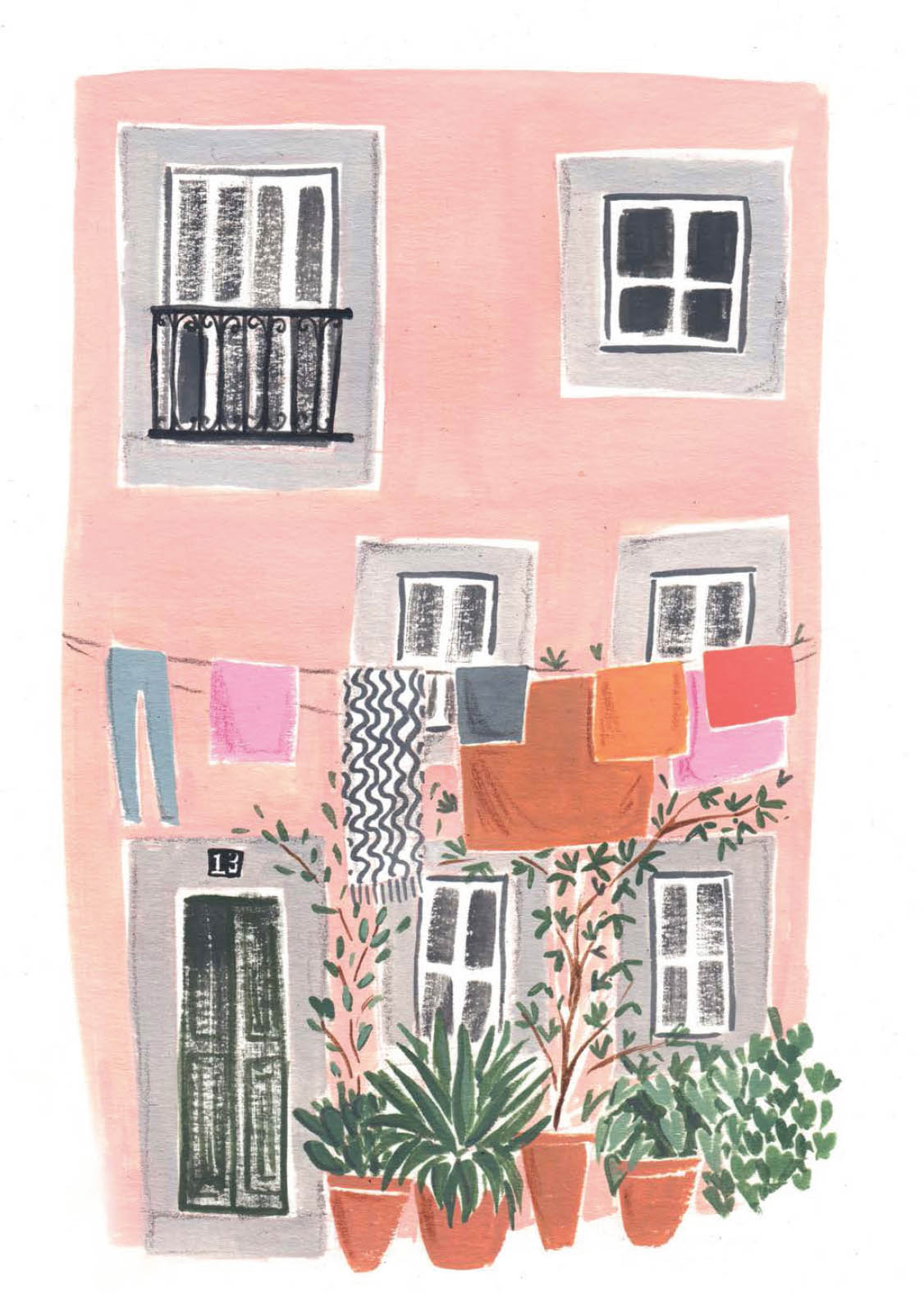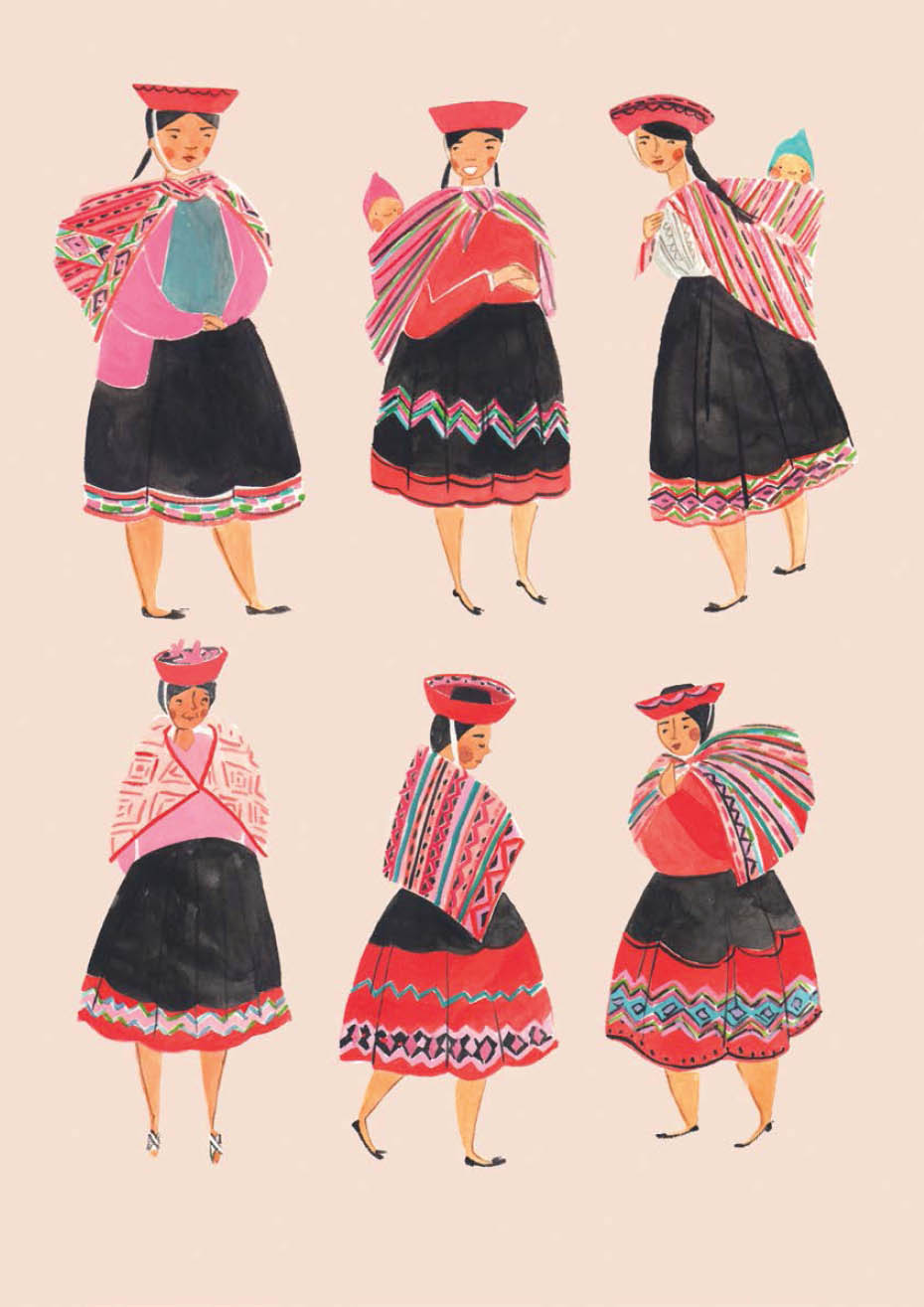 CHALLENGE 31
CHALLENGE 31 
Discovering your own style
STYLE IS A TRUE CREATIVE QUEST. EVERY ARTIST HAS ASKED THEMSELF: “HOW DO I FIND MY STYLE?” I HAVEN’T BROUGHT UP THIS TOPIC SO FAR IN THIS BOOK BECAUSE I BELIEVE THAT STYLE IS THE RESULT OF PRACTICE AND TRAINING. YOU NOTICE IT, RATHER THAN GOING OUT TO FIND IT. THROUGH YOUR PRACTICE, AND BY MEETING THE CHALLENGES THAT HAVE BEEN OFFERED TO YOU IN THIS BOOK, YOUR STYLE WILL UNAVOIDABLY EXPRESS ITSELF. THIS CHALLENGE INVOLVES HIGHLIGHTING IT.
Style as a consequence of your work
If you’re just starting, don’t think about your style. Concentrate instead on your training. “When you’re thinking about your style, you always write badly,” wrote the French writer Rémy de Gourmont (Promenades littéraires, cinquième série, “Le style et l’art de Stendhal” [Stendhal’s Style and Art], 1913). As you create, follow your curiosity, open yourself to multiple influences, get perspective on your work, and begin projects. Your style will form itself.
The American photographers and writers David Bayles and Ted Orland, in their book Art & Fear, Observations on the Perils (and Rewards) of Artmaking, write: “Style is not an aspect of good work, it is an aspect of all work. It is the natural consequence of habit.” As you learn and practice, you will accumulate preferences and habits, and this challenge will help you to discover them. The American artist, illustrator, and writer Lisa Congdon confirms this vision in an interview with the blog Outlier: “Even though I worked hard for years to forge my own style, I wasn’t actually progressing towards the style that I ended up discovering. Getting there took years and lots of experimentation, trial and error, and work in order to try to differentiate myself.”
Observing your work
One way to discover your style is to observe your work. Take out the last things you created and observe them, comprehensively and holistically. What are the common threads? Are they a result of your creative habits (where you find your ideas, how you mix them, what your artistic sensitivity is, etc.)? Observe the repetitions, in particular, and notice what you do automatically. This could have to do with how you work on color, shapes, motifs, subject matter, and so on. If you haven’t already done it using challenge 20, list your strengths. Do most of your creations use your strengths? And likewise, in the creations that you find less good, can you see reflexes that are not helping you and that you could maybe get rid of?
In order to highlight your style more clearly, you could revisit one of the first things you created. Your style has evolved since then, and you will be able to see that by comparing the older creation with your recent work.
Winter coat, by Emma Block, 2018.
Emma’s creations are delicate and joyful. Her favorite mediums are gouache and watercolor.
Alfama, by Emma Block, 2017.
Spotlight on Emma Block
“The way that I found my style is the same as for most artists, I suppose: by producing a whole lot of work and by varying my sources of inspiration as much as possible. Everybody has a style, just like everybody has their own handwriting. The more work you do, the more your style will emerge and the more confident you become. Of course, you shouldn’t fall into the easy way out; don’t try to be like someone else by copying their style and their work.”
Instagram : @emmablockillustration
Site : www.emmablock.co.uk
Peruvian women by Emma Block, 2017.
Emma draws inspiration from the people she meets in her daily life; old photographs, movies, or clothes; her travels; illustrations from the 1950s; 1930s jazz; and dachshunds.
Choosing a favorite subject
When starting an artistic practice, many people choose a favorite subject to focus on. In painting, it’s often landscapes, cityscapes, portraiture, animals, the sea, still lifes, and so on. For me, it’s watercolor flowers. Exploring your favorite subject is a way to forge your style. Your preferred subject captivates you and spurs you on; it seems inexhaustible. By lingering on it, you take the time to study its subtleties and difficulties. You move beyond the initial stage of technical apprenticeship that is necessary for any new medium or subject, and you connect with your style through your experimentation.
You may find that the people around you urge you to make changes: “Why don’t you try some new subjects?” They may not be aware of all the challenges that your favorite subject poses for you, and all they see is “the same thing over and over.” Don’t be afraid to keep exploring the subject for as long as it intrigues you. On his blog, the American watercolorist Stephen Blackburn talks about this issue: “I’m not saying that your style should be reserved for one subject alone, but concentrating on one subject is a good way to allow your style to emerge. I now use the style that I’m known for on all sorts of subjects, but I started developing it by concentrating on landscapes and trees, and then flowers.”
Being authentic in order to differentiate yourself
In order to truly advance towards your own style, you have to be authentic. Don’t ask yourself too many questions like “Am I too scattered?”, “Will people like this?”, “Is it original enough?” Embrace every part of your art and be yourself, even if that scares you. As I described it in challenge 10, follow your curiosity and have fun. In your practice and your research, push out far, without constantly comparing yourself to others. Take the time to be alone and dedicate time to your art in order to build your process on your own, following your inspirations. What is your impact? How do you transmit your essence through your art? Dare to reveal yourself and allow your vision to shine through in your art in order to set yourself apart.
Revisit Danielle Krysa’s suggestions for finding your style in her story on page 78.
![]() Your Turn
Your Turn ![]()
Take a moment to take stock of your style and find out where you stand.
- 1. Collect a number of the things that you have made and observe them. Look for common threads and for strengths. You can also redo one of your earliest creations in order to get a better sense of how your style has evolved.
- 2. In order to find cohesion in your work, concentrate on one favorite subject for a period of time. Go into it in depth, get beyond the technical difficulties, and dare to experiment.
- 3. Are you able to be authentic? Use the following questions to help you understand better:
- When you observe your creations, can you say, “That’s definitely me!”?
- Do you feel your own imprint on your work, or do you instead still see too much of what has influenced you?
- Do you have the impression that you are trying to please someone with your art, even subconsciously?



